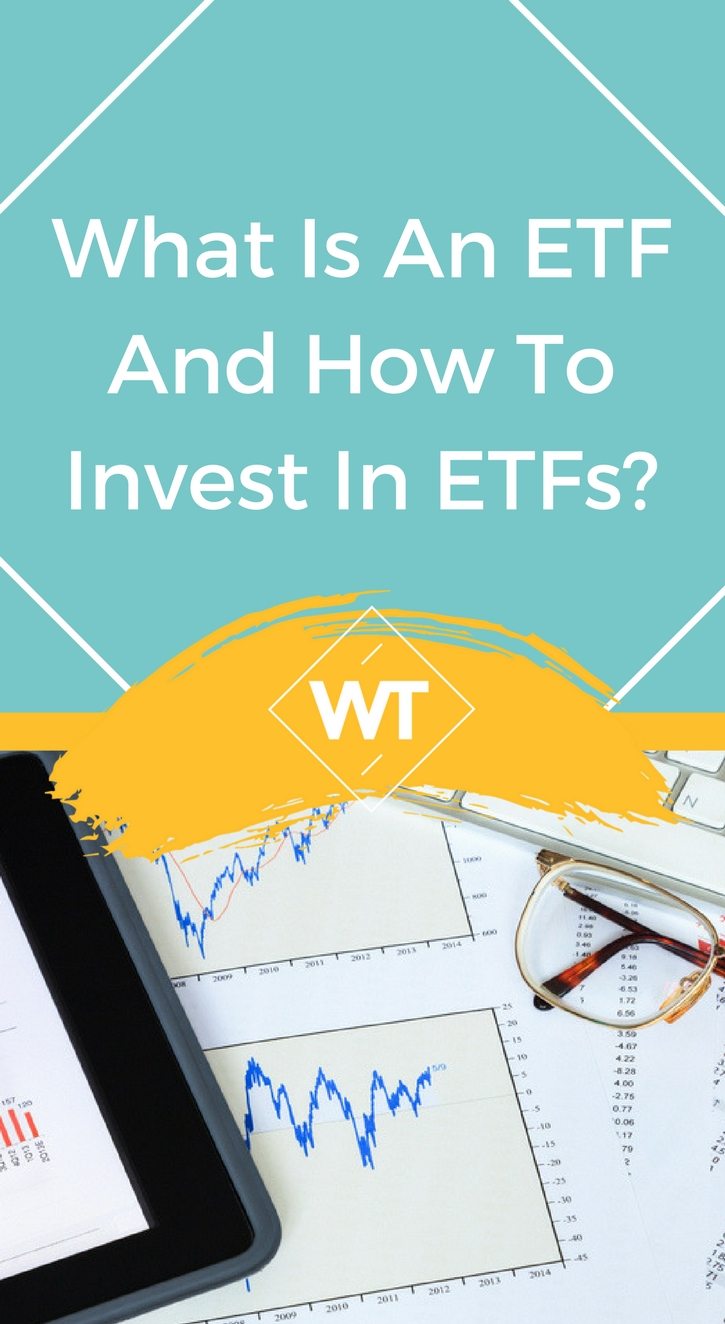What is an ETF and How to invest in ETFs?

It was a sunny day in April 2009 and markets had been through a lot of turbulence since late 2008 due to global crisis and related developments. There was volatility across all markets or asset classes be it equity, commodities, real estate, etc.
My friend Sanjay who dabbled in stocks and mutual funds in the past asked me “What is your view about investing in ETFs? Should I go for it?” I had to first make sure he understood what an ETF is as the first step…. let alone invest in them. Some of my advise to him is compiled below.
Understanding ETFs
ETF is short for Exchange Traded Fund. An ETF is a security that tracks and mirrors the performance of an index, commodity, or sector and trades in shares (like a stock) on an exchange.
An ETF is actually a sort of mutual fund whose shares or units trade like a stock intraday. Due to this unique feature ETFs are a hybrid instrument providing you the advantages of a fund and that of a stock as well.
Example: If you invest in Nifty ETF (Nifty Bees – managed by Benchmark Mutual Fund) when the Nifty index was at 5000 levels, the Nifty ETF would be around Rs.502 per unit (one unit being 1/10th of Nifty index). Nifty Bees is the name of the Nifty index ETF managed by Benchmark mutual fund.
There are many types of ETFs which mimic or mirror the underlying asset (Nifty index in case of Nifty ETF). However, most of the examples in this article are related to index ETFs because the features of each type of ETF can vary depending on the underlying asset.
Remember that ETFs in general are passive in nature and are meant to track or follow an index, commodity or asset class. Normally, a regular ETF is not supposed to outperform the index but rather track the index as closely as possible.
Advantages of investing in ETFs
Some of the salient advantages of investing in ETFs are summarized below:-
Easy & Quick Diversification: Taking the above example forward Sanjay could just invest Rs.502 in Nifty Bees and get a portfolio of 50 stocks comprising the Nifty index. It is as simple as investing in an index fund or diversified equity fund.
Liquidity: ETFs can be bought and sold intra day like any other stock.
Pricing: It is market determined and transparent. In case of regular mutual funds the NAV can be impacted if significant redemptions from one large investor or several investors take place. In case of ETFs redemptions will not affect the fund value unless the market sentiment itself is bearish.
Expenses/Charges: In case of ETFs, the expense ratio would be 0.5-1% of transaction value and varies from fund to fund, while brokerage & delivery changes would be 0.6% of transaction value for delivery based trades. So for investors the total costs should not exceed 2% in total.
On the other hand mutual funds have entry or exit charges which can range from 2-5% and expense ratio ranging from 1-3%. These are approximate numbers, so consult a professional and verify personally before you make an investment decision.
Tracking Error: Tracking error is a measure which captures the deviation between the fund portfolio and the index. This is a good indicator which shows how closely index funds track the benchmark index. So lower the tracking error the better the index fund.
For example index funds have tracking error ranging from 1% and going up to 3% or higher. But ETFs such as Nifty Bees, QNifty, etc have tracking error of less than 0.5%, which makes them a good choice for index based investments. These are approximate numbers, so consult a professional and verify personally before you make an investment decision.
Flexibility: ETFs suit all types of investors – short, medium and long term. These instruments can be used for trading – intra day, positional as well as long term trades. If you are a long term investor you don’t have to bother about short term market fluctuations.
However, in case of mutual funds monitoring performance is important. Sometimes a fund performs badly, investment policy can change, markets can change course, etc which will trigger a sell. For instance in a bear market a scam is announced and if you fund holds significant portion of that stock, you will be forced to sell.
How to invest in ETF?
Sanjay asks me “Can I buy ETFs just the same way I buy stocks?” I replied affirmatively and said that the process of investing or trading in ETFs is not different from those of stocks. To buy an ETF you need a trading and demat account with a broker or financial institution with the requisite funds.
Example: When you by 100 ITC shares at Rs.170 you put a buy order with the requisite quantity, rate, etc. The process is similar in case of ETFs. For example when you buy 10 Nifty Bees at Rs.505, this works out to an investment/trade of Rs.5,050. You can hold it as an investment or sell it later (if you want to trade). Assuming that Nifty Bees goes up to Rs.512 you can sell 10 units and make a profit of Rs.70 (before transaction costs).
If you are an investor you can hold Nifty bees for a few days, few weeks, months or even for several years, which is your choice. You can buy more, sell fully or partially, etc. If you are not a regular trader or investor, you can just buy and hold it for long term. Remember stocks have to be monitored frequently for news, industry developments, etc, but in case of ETFs your efforts on monitoring will be minimal.
Disadvantages of investing in ETFs
Sanjay says “You are telling me that ETFs are the best in all respects. In that case most people should be investing via ETFs which is not the case. What are the demerits of ETFs?” I could not fully disagree with Sanjay, so I told him that ETFs have some draw backs. I emphasized that like any other investment instrument has positives and negatives ETFs too have some drawbacks. Some of the drawbacks are discussed below: –
No Out performance: ETFs are meant to replicate the returns of the index or asset it tracks, so investors cannot benefit from out performance. For example if Nifty index returns 10% in last one year, the Nifty ETF (Nifty Bees) will also return close the 10% (+ or – 1% max). But some diversified mutual funds can provide returns of 15% or even higher in the last one year.
Liquidity Issues: Some ETFs may not be liquid although they are traded intraday. This could be because the product itself is not popular or may have been recently launched. There could be sufficient alternate products which have taken a lion’s share of volumes. For instance Shariah based ETFs have not picked up in a big way in India and volumes are low.
Trading Spreads (Gains): For stock traders, ETFs may not be as attractive as direct stocks. This is due to the fact that ETFs are not as volatile as individual stocks. Similarly factors affecting individual company (news, developments, regulations, etc) are used as a trigger to buy/sell stocks, but this is practically difficult in case of ETFs. For instance if there is a new affecting L&T stock trading the stock can be more favorable than trading Nifty ETF.
Transaction Costs for Investors: For investors who keep churning their holdings on a regular basis (say every week), the brokerage and delivery costs can be significant and can wipe out a significant portion of profits.
Conclusion
Lets remember the fact that there are umpteen number of investment avenues today for different types of investors. So it becomes imperative to choose an instrument which is cost effective, efficient, flexible and suits various investment strategies and changes that happen over time.
If you have a strong conviction about the India Growth Story and have a long term view using ETFs to invest can be the safest and smartest option. Although it may not provide you the returns like direct stock investing, you can enjoy some peace of mind for the rest of your life.









Leave a Reply